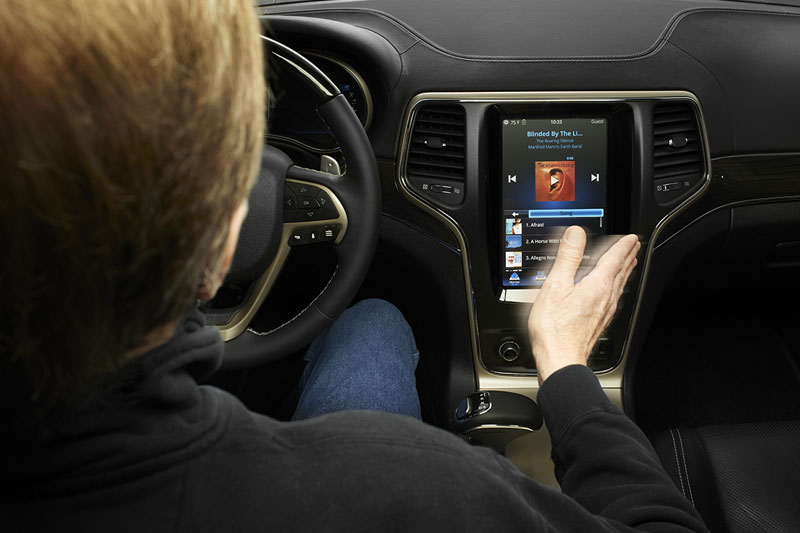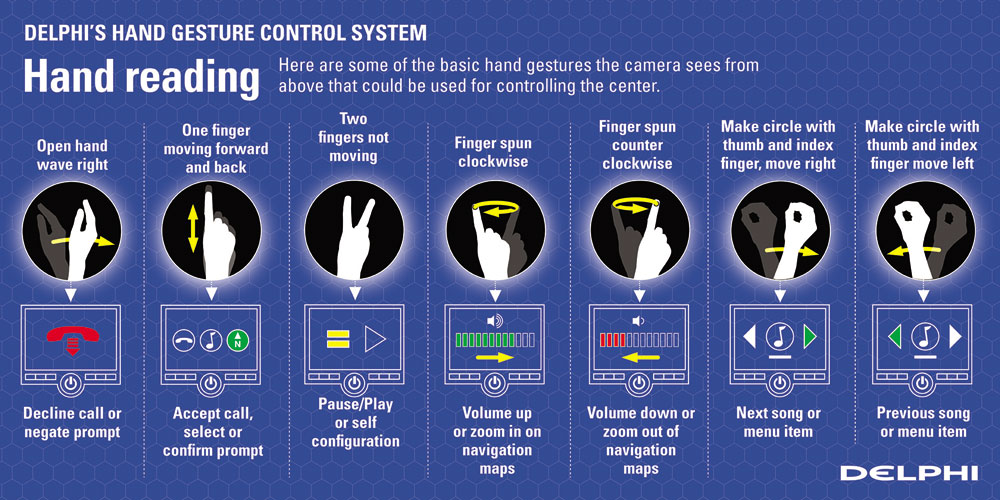
It can’t read your mind, but in the not-to-distant future, your car may be able to ‘read’ your intent using sign language, from a mere wave of the hand or flick of a finger, thanks to an industry-first innovation from Delphi.
It’s called ‘gesture control’ and will soon be available on vehicles built by a leading European manufacturer.
The technology will enable drivers to be able to sift through a stored playlist of music, zoom in and out of navigation maps or accept phone calls, all without ever having to look at or touch the centre console.
“How do you give customers what they want in infotainment but keep their eyes on the road?” asks Pietro Ottavis, Vice President, Delphi Infotainment & Driver Interface. “That has been the challenge since the introduction of infotainment in automobiles. We think we’ve hit on something that is very useful, practical and intuitive.”
Not just practical, but an added element in eliminating distracted driving. Simple hand and arm gestures control the infotainment system, essentially performing ‘sign language’ with the vehicle. These everyday gestures require no visual attention, freeing drivers to keep their eyes on the road ahead.
Delphi’s gesture control complements existing control systems as part of the company’s multi-modal approach to providing drivers with multiple interaction options. On one system drivers have the option to use voice, eye gaze, gesture and touch. It’s the latest in hands-free infotainment to help drivers choose how they want to communicate with their vehicle.
Drivers will be able to tailor the cockpit experience to fit their needs and comforts. The result is a safer driving experience for everyone on the road. “Proximity sensing, voice recognition, reconfigurable instrument clusters and placing buttons on the steering wheel are all attempts at doing that. Now we’ve added one more dimension. You can make hand gestures in mid-air and your car will respond.”
An infrared camera is placed inside the overhead console. This camera can detect any hand gesture in a field above the gear stick, from the screen in the centre console to the arm rest and from the height of the waist to the height of the shoulder of the driver. Imagine resting your elbow on the centre arm rest and then rotating your forearm and hand up to shoulder height. That is the motion engineers tried to replicate.
“A lot of thought was given to what gestures would be understood around the world,” Ottavis explained. “Many of the gestures have been used for years in tablets and smartphones.”
“For example, by waving your hand from left to right, you can advance a playlist. If you want to go back in a list, you simply wave your hand the opposite way, from right to left. If you want to pause, you simply make the universal peace sign.”
You can tap your index finger on an imaginary surface, as if you were touching a button a phone, and you accept a phone call or hang up. Draw an imaginary circle in the air; clockwise to raise the volume and counter clockwise to lower it. Manufacturers can add to the list or use different gestures to match a culture or market more exactly.
Providing drivers with options is part of Delphi’s fully-integrated solution for the cockpit experience. Delphi’s infotainment solutions deliver personalised interaction choices in a user-friendly interface with different modes to meet different needs around the globe.










